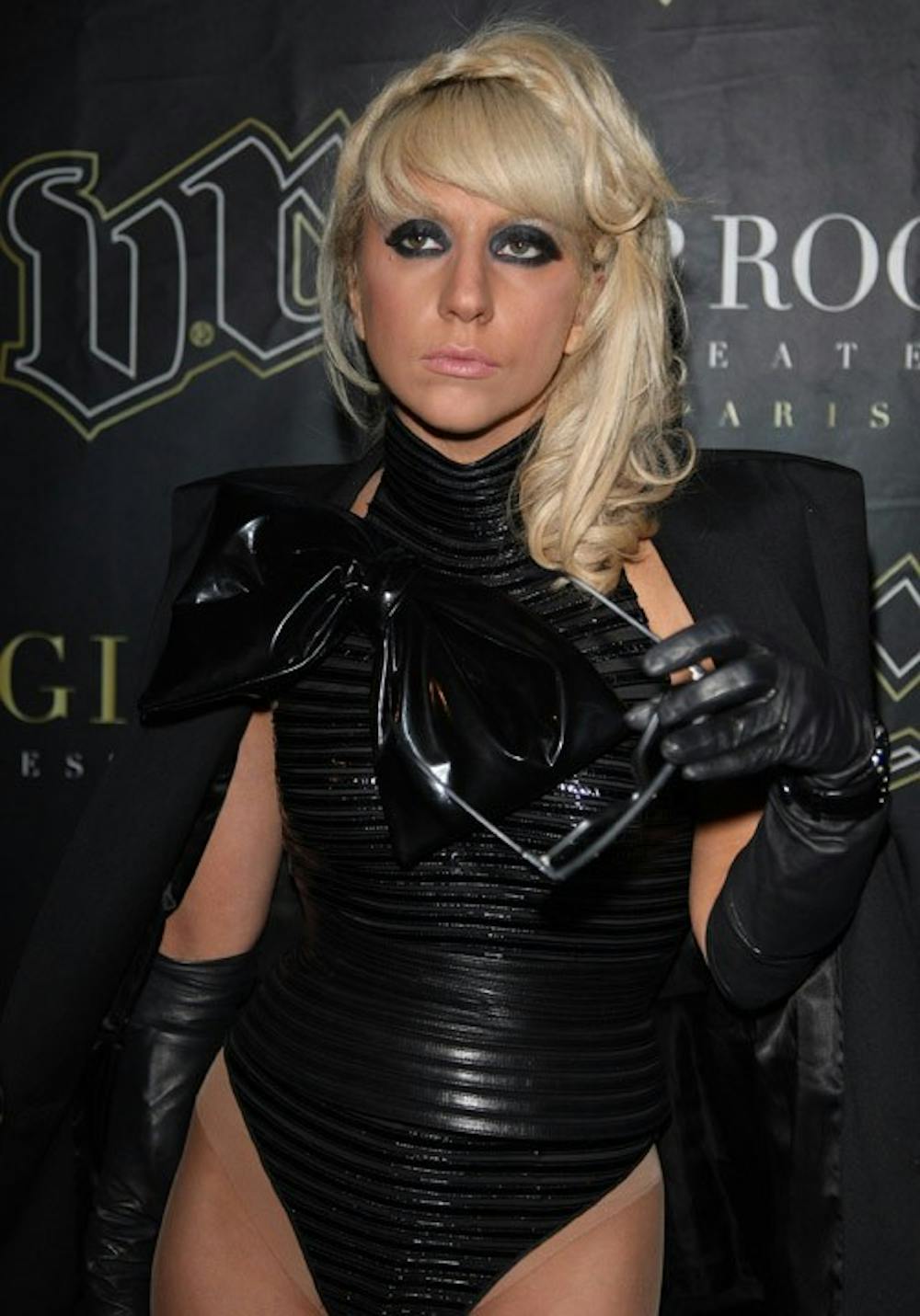Lady Gaga can do whatever she wants. Endless radio play of disco stick innuendo? Sure. Dress of Kermit the Frog dolls? No problem. Choreographed wheelchair dances followed by an over-the-top staging of her own death? Why not — she’s just a pop star, right?
Lady Gaga, coming this Tuesday, Sept. 29 to D.A.R. Constitution Hall, is the latest brand of American pop star and the epitome of what our culture has become — satire. Singing about glamour, fame and money in a time where our country is experiencing a major economic recession, Lady Gaga has functioned almost as an escape where all we want to do is: just dance.
Pop super stardom, now a relatively female-dominated and culturally-harmless arena, began almost as something dangerous. Elvis Presley and his hip-swinging, new-fangled rock music brought music to the masses, entrancing American teens and making parents across the country nervous for the tainted morals of their children. And despite efforts to censor Presley, his popularity grew to iconic standards. The introduction of rock ‘n’ roll to the masses resulted in a great cultural shift — almost an obsession. The 1950s brought with them the concept of “Top 40” hits and the rise of television shows centered on music, such as “American Bandstand.”
In the 1980s came a shift in the definition of pop. No longer were musicians expected to play their own instruments or even necessarily write their own songs. Pop became performance, and no one epitomized that more than Madonna. The Queen of Pop, Madonna reinvented herself endlessly, producing hit after hit and always changing to remain relevant and shocking. She lived stardom like art and used the stage as her canvas. With her elaborate stage productions and outrageous outfits, Madonna became more of a performer than a musician. She became the cultural standard to which all other pop stars would be measured against time and time again, only to find that no one measured up.
The standard of performance had been raised. No longer did we expect our musicians, dancers and performers to exist in different realms, we expected them to meld into one. And so the concept of the triple threat was born. The 1990s brought a new wave of saccharine pop to the mainstream. The lyrics of Disney pop stars like Britney and Christina lacked the edge of their predecessors and failed to challenge cultural norms and practices in the way that Madonna did, but what they lacked in depth, they made up for in over-the-top glamour. Controversy surrounded their concerts as lip-synching became more prevalent and a pop star’s priorities were re-organized: the show was more important than the actual sound. Overproduced shows sold out venue after venue, almost reminiscent of the 1980s, but this time instead of having only one Material Girl, there were several and they expanded their demographics, capturing the attention of everyone from young tweens to older audiences looking for a pop fix with a taste of theater.
We became a culture both obsessed and transfixed. Not only did we adore our pop stars, we wanted to be them and we fell into a culture of manufactured stardom. It wasn’t just sleazy talent manager Lou Pearlman gathering handfuls of frosted-tip singers in Florida and turning them into boy bands anymore. The scale had become grander and it was never more prevalent or obvious than it was with the 2002 debut of “American Idol.” Even the name of the show implied the over-the-top adoration that we as a nation gave to pop stars. They weren’t just our entertainment, they were our idols, and in true American fashion, we didn’t just want an icon, we wanted a story.
It was almost a reincarnation of the American dream and Kelly Clarkson became the first poster child. Once just an average girl from Texas with a strong set of pipes, Clarkson found immediate stardom off the heels of “Idol,” literally becoming an overnight sensation after earning the title of the first American Idol.
So is pop stardom about talent or façade? Lady Gaga says both. Acoustic renditions of hits “Paparazzi” and “Poker Face” prove that she has the musical chops to make it as a reputable artist, but instead she has chosen to represent pop music and performance as art. Pop stardom has fallen into patterns, and the recurring theme is this: pop stars can do whatever they want, and we will accept it because we love the outrageous, the crazy and the scandalous. And Lady Gaga gives us what we want. Every public appearance pushes the boundaries of what we have come to expect and every performance defies what we have come to accept — and because of all the craziness she throws at us, we love her.
Maybe this is what it means to be a pop star in our time. They must not only be entertainment, but commentary. Or maybe pop stardom isn’t serious — maybe Lady Gaga is right, and our obsession is nothing more than a Lovegame.
You can reach this staff writer at kcasino@theeagleonline.com.





